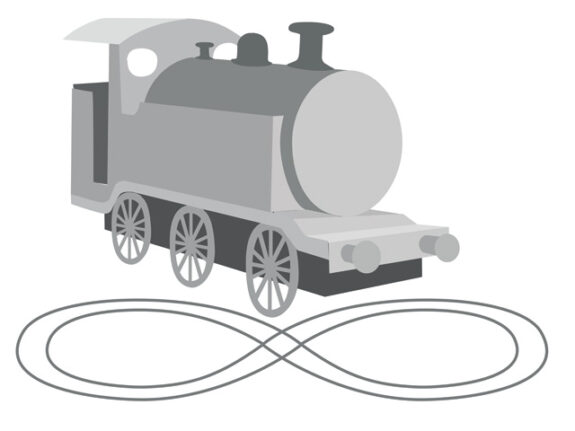
Infinite creativity
And discrete infinity
Language is creative in two senses, in the sense of poetry, of plays on words and in the sense of what is known as ‘discrete infinity,‘ discrete because the words are discrete, infinity because there is no limit to the ways they can be combined. Children’s language is creative in both senses. Both can be problematic for some children.
A simple sentence can be extended indefinitely by successive steps of what is now known as ’embedding’ (or more traditionally as ‘subordination’):
- I tell the truth.
- You know that I tell the truth (one step of embedding).
- Your mother agrees that you know that I tell the truth (two steps).
- The newspaper says that your mother agrees that you know that I tell the truth (three steps).
And so on. Obviously, the resulting structure becomes increasingly hard to process. But there is no point at which it ceases to be English. Hence discrete infinity. The repetition of the same sort of structure is known as ‘recursion’.
Crucially, the process of what is known as ‘derivation’ begins with the most deeply embedded part of the structure – reversing the idea by the traditional term of ‘subordination’.
The same point applies to any language, not just English.
A counter-claim
One linguist, Daniel Everett, claims that there is a language, Pirahã, which disallows even the first step of embedding. He claims that Pirahã speakers never refer to anything other than what is currently in the immediate frame of reference. Pirahã is spoken by a Brazilian tribe of less than 500 people who had studiously avoided contact with the outside world until Everett persuaded them to allow him and his family to join them. On Everett’s account, Pirahã speakers never question reports of untruth or allege abuse because their language makes this impossible. Really? If so, why have the Pirahã so carefully avoided contact with the developed world? Everett’s account of Pirahã is cited approvingly by Tom Wolfe (2018). But Everett’s account is demolished on both theoretical and empirical grounds by Andrew Nevins, David Pesetsky & Cilene Rodrigues (2007). Most linguists accept that demolition. Anything else would be weird given that Everett is querying a generalisation which appears to hold of every other language in the world, and his data concerns a language which is clearly very threatened. As a language approaches the point which Pirahã is now sadly at, it often loses key aspects of its grammar. This is noted about languages much less threatened than Pirahã. Everett’s much-lauded point is thus highly suspect.
A functionality with potential
Viewed as a functionality, language is clearly not a behaviour, but a potential. This potential is realised as a child becomes able to understand that the old song about swallowing a fly could go on forever.
Exploiting this potential, the child can say things which have never been said before in the entire course of human history, and yet be understood.
Testing
A test characteristically involves a number of preset tasks, each representing some arbitrary degree of complexity. For the purpose of helping a child with difficulties in speech and/or language, no set of preset tasks can determine how far the child’s capacities stretch. It is possible, for instance, that a child’s grammar does not include any provision for going beyond simple sentences like “I tell the truth”. At a given (early) point in the child’s process of language acquisition, the recursion has not started to develop.As the child grows, a failure of recursion may indicate a significant problem with the grammar,

